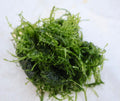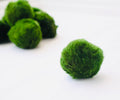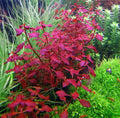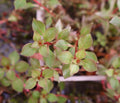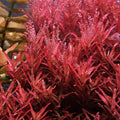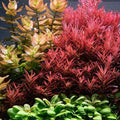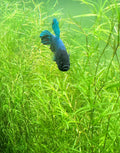Best Algae Eaters for Your Aquarium
Is Algae Really That Bad?
When it comes to algae in a tank, it's something that's kind of unavoidable. If you're running an excellent tank, algae is actually a good sign of having a healthy ecosystem.
Whether it's hair algae, algae in the water column, or algae on surfaces—it's a really good sign that you're running a good tank.
So algae is not a problem. I'm actually not terrified of algae in here in the fish room. I promote it because it's an excellent food source for a lot of fish. Many people, when they start out, look at a tank and think algae are disgusting and dirty.
If there's algae growing, it means that there are nutrients in the tank—it's probably great for plants. Sometimes too much algae can be an imbalance in the chemicals in the water. So there might be too many nutrients and too much light, and that's why you're getting algae blooms.
1. Bristlenose Pleco
The first fish that's really, really good at cleaning algae is your good old bristlenose. This is one of my favorite tanks here at the fish room right now—it is just packed full of algae eaters. In here we've got a pair of super red bristlenose, and they've gone absolutely berserk, and they've been breeding like crazy, so there are babies all over this tank.
The other thing that's been breeding like crazy in here is the shrimp, and there are shrimp babies all over the tank too, so this is a really satisfying tank. Bristlenose are a great little algae eater. They've kept this tank absolutely spotless with algae.
Bristlenose are a great little community fish as well. So if you've got a community tank at home, adding one or two per 20 gallons (ca. 76 l) will be great.
They do get a little bit larger than people think. You'll see them at the shops at about an inch long—but they'll reach about 5 inches (ca. 13 cm) within a year and a half.
They’re also really good at hovering up extra leftover foods. I would definitely recommend getting a specialty food for them.
A lot of people make the mistake of adding it to a tank, thinking it's just going to eat the algae, and they don’t give it a specialty food—it gets skinny and dies. Add a cave in the tank, and they'll start breeding for you. They are so easy to breed. The males will trap the females in the cave, take care of the eggs, and all of a sudden your tank’s filled with tons of baby bristlenose, which you can catch and trade at your local fish store.
2. Reticulated Hillstream Loaches
The next fish I'm going to recommend is kind of similar to the bristlenose. Probably not as good at eating algae, but definitely a little bit smaller and a way more interesting-looking fish—reticulated hillstream loaches.
They're small, flat, stingray-looking fish. They primarily eat diatom algae. I don’t find them as effective as bristlenose, but they do a good job staying on top of it.
3. Otocinclus (Otos)
Otocinclus, or Otos are great algae eaters. They're probably honestly one of the best. They're really small, peaceful, and cute. Super effective at eating diatom algae.
They can make a tank look spotless. The challenge with Otos is that many are wild-caught, making them more fragile. They’re not great at eating prepared foods unless transitioned slowly.
If you're getting a shipment of Otos, put them in a tank with a ton of algae. Once they clean it all, you can try to transition them onto foods.
They’re great with nano fish and shrimp and are generally very peaceful. Just tricky to keep long-term if you don’t get them eating prepared foods.
4. Whiptail Catfish & Mystery Snails
This tank is a good example of common whiptail catfish and mystery snails doing an impressive job at algae control.
Whiptails are like funky-looking bristlenose. Males and females lay eggs on flat surfaces and fan them until they hatch. They’re good in community tanks and interesting to watch.
As for mystery snails, they can overpopulate tanks. But mystery snails have become a bit of a staple here. They clean fish poop, eat old plant matter, leftover food, and a bit of diatom algae too.
They’re in almost every tank here—except tanks with eggs or fry.
Final Thoughts
These are all my favorite algae-eating fish. Again, algae is not a problem. Even with these fish, you’ll still have to scrub tanks. Some algae just won’t come off.
Having a fish tank is like having a little job—you’ve got to get your hands wet sometimes. There's no such thing as a “set and forget” ecosystem.
But these fish will be fun little pets, help you stay on top of the algae, and help turn your tank into a healthy, thriving ecosystem.



